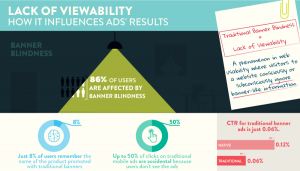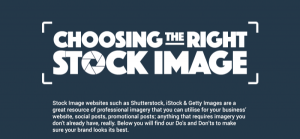
Introduction to Social CRM
It must be a dream of any customer-centric company to have a magic crystal ball that helps predict the changes in customer behavior and expectations. In reality, it is quite a challenge to predict where, when, and how these changes are going to take place.
Sales, marketing, and customer service are the subject areas where businesses witness continuous innovation in order to get a bigger piece of the pie.
Customer Relationship Management (CRM) has evolved from on-premise customer driven solution and live-chat system to cloud-based on-demand software with social media, analytics, and mobile integration. By embracing social media as an integral part of the system, CRM has now become smarter than ever. It helps businesses to stay in touch with their customers and prospects by following them, listening to their conversations over social media, and engaging with them in real-time without leaving the CRM. This fusion of CRM with social media is known as “Social CRM”.
Perhaps, Social CRM is indeed a magic crystal ball of the 21st century that businesses have been dreaming about. This next generation CRM involves an active participation in social media conversations from social platforms like Facebook, LinkedIn, Twitter, Instagram, etc. in an effort to convert those leads into sales.
Irrespective of business scale, companies are luring customers through human connections. Just like personal relationships, business people today still highly appreciate intimate and real connections. It is social media that holds the credit for strengthening those values as it plays a crucial role in forming opinions about companies and people we are engaging with. People like to interact with real people—whom they know and can trust. Not surprising why Social CRM is a game changer. It is crowned as a new way of customer engagement.
The answer to why business should consider integrating CRM with social media is endless. Let’s have a glimpse into benefits of social CRM integration.
Powerful Weapon to Nurture Leads & Maximize Conversion
Thanks to the development of CRM for making sales teams across the world become highly productive and efficient. Through CRM, salespeople can access records of sales leads, follow up tasks, schedule meetings and send out quotes all in one place. Popular CRM platforms are highly interoperable with other enterprise systems such as Voice over IP and marketing automation tools. However, the most powerful interoperability of CRM, in fact, lies in its integration with social media.
Generating leads is only the first part of the sales funnel. The real success of a sales team comes from both lead generation and lead management. The goal is to do everything in order to nurture each lead in order to get the highest number of sales possible.
By plugging social capabilities into CRM, salespeople are right at the heart of social conversations and social mentions. They can easily connect with prospects and build a better relationship through a seamless communication experience.
Businesses are working hard to build a strong sales team to communicate with their contacts, existing customers, and leads; however, the next question is how efficient they are in keeping track of all the records. It is a daunting task for salespeople to keep track of each and every conversation on their own. However, social media integration through customized social CRM can ease this task as it allows each account to be linked to all interactions including conversation coming from tweets, emails, or through other social media.
Tackle Customer Sentiments
We have seen how ratings and reviews are so important to restaurant businesses. Restaurants have to stay up-to-date on both online and offline reviews from their customers to ensure that they serve delicious foods and provide best dining experience. Nowadays, all other businesses out there must keep an eye on sentiments shared on social media about their products and services too.
With the help of Social CRM, businesses can get back to their customers in minutes. By following customers closely, companies can tackle negative sentiments quickly and, hopefully, can transform those negative situations into positive ones. Timely and effective communications are keys to helping businesses manage negative sentiment, rebuild trust, and promote loyalty.
It’s All about Customer Engagement
Here are some of case studies to show that customer engagement has always been a major driver behind successful businesses.
Eurobank – Connecting International Trading Partners
Break the ice with a new business partner who are on the other side of the globe can be challenging for international organizations. Eurobank, the third-largest lender in Greece, has taken an initiative to assist its customer base in tackling this issue. To enable online international trading, the bank launched Exportgate–cloud-based digital platform based on IBM’s Digital Experience software. This digital platform is an efficient business-to-business web portal equipped with powerful social capabilities and a number of e-services designed to help exporters and importers to facilitate trade transactions with international partners.
The web portal also had a directory containing information about 6,500 international traders and 1,400 Greek exporters. It was a big surprise to everyone when the web portal reportedly brought in 2,300 new partnerships to the bank when they launched in 2003.
Starbucks – Product Innovation through Customers Engagement
Take the classic case of Starbucks as an example, the company implemented a concept popularly known as “Crowdsourcing” by launching a famous consumer dedicated portal called ‘My Starbucks Idea’. An objective of the portal was to receive suggestions and ideas from customers in order to improve customers’ experience. The portal has now become a major communication channel among customers and Starbucks’ employees for suggestions and new ideas.
In less than six months, the wisdom and knowledge contributed by the crowd gave the most valuable insights which helped accelerate product development process. More than 70,000 ideas were suggested and Starbucks has already implemented some of the best creative ideas.
The success of ‘My Starbucks Idea’ proved that engaging with customers through centralized channel not only helps company to launch better and cheaper products to the market within much shorter timeframe, but also provide consumers with more enriched product experience which in turns create trust and loyalty to the brand.
Proctor & Gamble – Open Innovation
In 2001, long before Social CRM became a buzzword, Proctor & Gamble (P & G) created its own innovation model called ‘Connect + Develop’. At that time, most of its new products in the market were originated from inside P&G with less than 10% of new initiatives came from outside.
P&G’s ‘Connect + Develop’ partnerships with more than 1,000 active agreements with innovation partners. They appointed dedicated staff in over 10 countries worldwide seeking partnerships with universities/institutes, sole inventors, emerging companies, SMEs, MNCs, and competitors. In 2008, over 50% of P&G product initiatives came from this external collaboration and ‘Connect + Develop’ contributed more than $ 3bn per annum in new business. Some of the familiar products from this initiative are such as Febreze, Olay® Regenerist, Oral-B® Pulsonic® Toothbrush, and Pringles®. Today ‘Connect + Develop’ had become a fundamental part of P&G business strategy.
Make the Most of Social Analytics Data
Sky Italia – Delivering the Right Message to the Right Target
With almost five million subscribers offering more than 160 channels, Sky Italia is one of the largest satellite TV broadcasters in Italy. The company provides its subscribers with next generation on-demand content on all devices. To remain in top position, Sky Italia adopted Adobe Marketing Cloud solutions—including Adobe Analytics, Adobe Target, and Adobe Experience Manager—which provide real-time analysis covering a vast swath of customer data into different segments. This helped Sky Italia gained a fluid understanding of customer interactions across screens and send the right message to the right audience. As a result, the company achieved reduced churn rate, increased number of subscribers, and a 49% growth in terms of revenue.
SFDC Scaling New Heights in Social CRM
Salesforce.com (SFDC) has always been a leading cloud-based CRM and now it is scaling new heights with social CRM support through organic product enhancement which provides powerful social tools for sales, marketing, and customer service as well as across business functions in the same organization.
Chatter – Social Network Within
The social engagement and collaboration starts right from inside an organization. An internal social network empowers employees to communicate and collaborate among them. Chatter—an embedded app in Salesforce—allows employees to collaborate on sales opportunities, service cases, campaigns, and projects and to share knowledge, files, and data regardless of their roles or locations. Chatter is not just a messenger, it drives innovation by gathering new ideas through forum, knowledge sharing, feedbacks, and polls.
Salesforce CRM and apps are mobile enabled, therefore, whether employees are on the web or on the road, each and everyone in the team can track team members and critical projects in the mobile feed.
Service Cloud – Anytime, Anywhere Social Customer Care
Social Customer Service is seamlessly integrated with Salesforce CRM. Service Cloud and Salesforce Social Studio combined enables social customer care agents to listen to and respond to customers in real-time across different social media such as Facebook, Twitter, and etc. The social customer requests/cases are escalated and route directly to the responsible agent at the right time.
According to Neilsen’s 2012 Social Media Report, social media users are most likely to comment on or ask a question about a company’s product or service on Facebook, both on the company’s page (29%) and on their personal page (28%). One in three of social media users prefer social care to the telephone helpline. On average, 47% of social media users engage in social care.
Sales Cloud – Making Every Lead Qualify & Easing Sales Process
With Sales Cloud, sales reps get to know the comprehensive picture of any customer before initiating communication. This 360-degree comprehensive social media data empowers them to be prepared to communicate with the customer at ease.
The reports and dashboards with easy-to-use, drag-and-drop user interface are one of the best features Sales Cloud has to offer. Salesforce has a file system that enable sales reps to maintain different types of files among the sales team, across the organization, or with customers. Everyone uses the same file version and get notifications whenever a new version is uploaded. Using external cloud storage like box.com, companies can easily enhance Salesforce document management system.
Marketing Cloud – All In One Social Marketing Platform
Salesforce provides businesses with a complete data-driven digital marketing solutions, marketing automation and Marketing Cloud that provides powerful social marketing capabilities. Social marketing, in particular, has moved to the next level. Salesforce has been beefing up its Marketing Cloud suite by acquiring buddy media and Radiant6—both are successful social pioneer companies.
With Radian6 Buddy Media Social Studio, businesses are closer to their social customers. Radiant6 tracks, monitors and responds to questions, comments, and complaints in an instant as soon as it happens. Radian6 is all about covering social media buzzes from Facebook, YouTube, Twitter, news, blogs while Buddy Media is all about managing, scheduling and publishing great content campaign across social media channels.
SocialPages makes publishing and updating facebook fan page easy, for example, embedding tabs on Facebook page can be done easily by point-and-click tools without any coding. Customized content such as relevant offers based on geographies and languages is the key factor that help accelerate an increasing number of fans.
Social.com is the most preferred social platform for advertisers and agencies. It customizes social advertising campaigns to drive real business from every penny spent on social ads.
Community Cloud – Smart Crowdsourcing Platform
Imagine a system that bring customer, partner, and employee together to brainstorm an idea and to have those members participate in a deeper discussion on any topic or issue. Imagine a system that can be built quickly and can be easily integrated with third-party, custom apps and various data sources. Imagine a stunning, simple-to-use online site that can be used as an extension of the brand. All of the above is not too good to be true and it is what Community Cloud has to offer. Community Cloud is Salesforce’s version of super smart crowdsourcing community for businesses. (Read Starbucks’s case study above.)
Community Cloud infuses communities with data from any system, anywhere enabling members to create and update records and processes from within the community. For instance, partners can update opportunities or qualify leads, customers can provide product feedback, and employees can create and escalate customer support cases.
Since community needs constant and active participation, the system allows the business to highlight and reward the most active member with customizable badges that appear in the feed and on their profile. Members can endorse one another for specific skills and expertise just like how we have seen it implemented on LinkedIn. Community Cloud can be easily scaled to meet growing needs of the community.
Summary
The social networking has transformed almost every micro aspect of human interactions. Social CRM is a “Game Changer” when it comes to exploiting social media to create a long-lasting bridge between customers and businesses.
This article originally appeared on Kairos Tech Blog.
Digital & Social Articles on Business 2 Community(270)
Report Post






